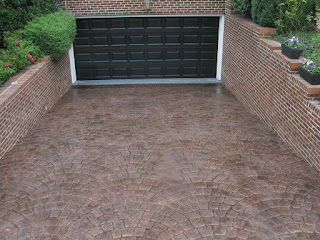Aesthetics is never a left behind terminology
in building a concrete driveway. Your driveway should be the most inviting
portion of your residence because driveways are the ones that give the first
impressions of your home. The aesthetics of your concrete driveway lies on the
elaborate designs you can incorporate onto it. That makes concrete the best
material used for driveway installation because homeowners have more
opportunities to enhance the profile and character of their driveways using the
flexible designing that decorative concrete offers.
Asphalt driveways have disadvantages compared
to concrete driveways. The adhesive material in asphalt driveways is called
tar. Tar is less expensive than cement but it is softer. Tar degrades easily
and diminishing such disadvantage is costly. Nowadays, sealants and integral
coloring are added to asphalt driveways to deviate from their plain blank but
reliance to such coloring limits the promotion of aesthetics.
How can homeowners establish aesthetics in a
concrete driveway, making designing in concrete driveway unique?
Multiple finishes can be applied to concrete
driveways. Acrylic cement coatings aid a lot in achieving such finishes. One
type of finishing can be done on the surface of the driveway and another type
can be applied on the borders. Driveways with two-type finishes have a contrasting
and supplementing effect. A patterned border is interesting. Borders improve
the look of concrete driveway by giving depth and dimensions and adding colors
would make it more elegant.
The
control joints of your driveway are also very useful in designing it. Control
joints are functional line markings used to prevent random cracks. Control
joints can be used to divide large driveways or by placing them in such a way
that they would have a pattern.
Stamped concrete aprons are also pertinent in
designing a concrete driveway. These are poured areas that connect your
driveway to the road. Stamped concrete aprons are placed on the first several
feet of the driveway and you have lots of options for its design pattern and
engravings.
These
and other ways too many to mention them all here enhance the aesthetic
character of your concrete driveway. Hire a contractor who will help you have
the most beautiful and elegant driveway a homeowner can have.




